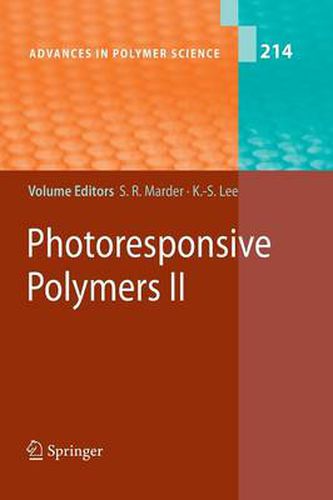Readings Newsletter
Become a Readings Member to make your shopping experience even easier.
Sign in or sign up for free!
You’re not far away from qualifying for FREE standard shipping within Australia
You’ve qualified for FREE standard shipping within Australia
The cart is loading…






This title is printed to order. This book may have been self-published. If so, we cannot guarantee the quality of the content. In the main most books will have gone through the editing process however some may not. We therefore suggest that you be aware of this before ordering this book. If in doubt check either the author or publisher’s details as we are unable to accept any returns unless they are faulty. Please contact us if you have any questions.
Over the past 25 years or so there has been a revolution in the devel- mentoffunctionalpolymers. Whilemanypolymersascommoditiesrepresent huge markets, new materials with a high degree of functionality have been developed. Such specialty polymers play important roles in our day-to-day lives. The current volumes 213 and 214 of Advances in Polymer Science focus on photoresponsive polymers. In particular polymers that can either change the properties of a beam of light that passes through them or who change their properties in response to light. Volume 213 starts with an introd- tion to two-photon absorption by Rumi, Barlow, Wang, Perry, and Marder. In this chapter they develop the basic concepts of two-photon absorption, and describe structure-property relationships for a variety of symmetrical and unsymmetrical molecules. The applications of these materials in 3D - crofabrication of polymers, metals, and oxide materials are detailed in the chapterentitled Two-PhotonAbsorberandTwo-PhotonInduced Chemistry contributed by the same group of authors. Then Bel?eld, Bondar, and Yao describe the molecules, dendrimers, oligomers, and polymers that can be - cited by two-photonabsorption and their application in processing materials with three-dimensional spatial control in their chapter entitled Two-Photon Absorbing Photonic Materials.
Speci?cally they describe the development of symmetrical and polar conjugated materials for two-photon absorption and their use as photo-initiatorsfor3D microfabrication. Juodkazis,Mizeikis, and Misawaalsoexploremultiphotonprocessingofmaterials intheirchapter,and provide more focus on the processing aspects of these materials and discuss thestate-of-the-artinresolution.
$9.00 standard shipping within Australia
FREE standard shipping within Australia for orders over $100.00
Express & International shipping calculated at checkout
This title is printed to order. This book may have been self-published. If so, we cannot guarantee the quality of the content. In the main most books will have gone through the editing process however some may not. We therefore suggest that you be aware of this before ordering this book. If in doubt check either the author or publisher’s details as we are unable to accept any returns unless they are faulty. Please contact us if you have any questions.
Over the past 25 years or so there has been a revolution in the devel- mentoffunctionalpolymers. Whilemanypolymersascommoditiesrepresent huge markets, new materials with a high degree of functionality have been developed. Such specialty polymers play important roles in our day-to-day lives. The current volumes 213 and 214 of Advances in Polymer Science focus on photoresponsive polymers. In particular polymers that can either change the properties of a beam of light that passes through them or who change their properties in response to light. Volume 213 starts with an introd- tion to two-photon absorption by Rumi, Barlow, Wang, Perry, and Marder. In this chapter they develop the basic concepts of two-photon absorption, and describe structure-property relationships for a variety of symmetrical and unsymmetrical molecules. The applications of these materials in 3D - crofabrication of polymers, metals, and oxide materials are detailed in the chapterentitled Two-PhotonAbsorberandTwo-PhotonInduced Chemistry contributed by the same group of authors. Then Bel?eld, Bondar, and Yao describe the molecules, dendrimers, oligomers, and polymers that can be - cited by two-photonabsorption and their application in processing materials with three-dimensional spatial control in their chapter entitled Two-Photon Absorbing Photonic Materials.
Speci?cally they describe the development of symmetrical and polar conjugated materials for two-photon absorption and their use as photo-initiatorsfor3D microfabrication. Juodkazis,Mizeikis, and Misawaalsoexploremultiphotonprocessingofmaterials intheirchapter,and provide more focus on the processing aspects of these materials and discuss thestate-of-the-artinresolution.